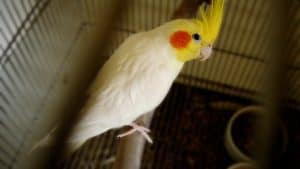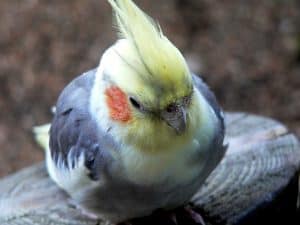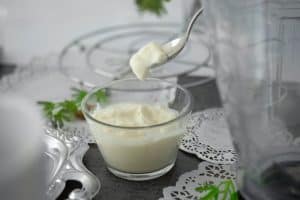Imagine cozying up in your living room with your feathered friend chirping happily by your side. It’s a peaceful scene, but did you know that everyday household activities could be putting your cockatiel at risk? When it comes to pet birds, understanding how do fumes affect your cockatiel is crucial for maintaining their health and happiness.
Many common household items and appliances emit fumes that can be harmful, or even deadly, to your cockatiel without you even realizing it. From cooking fumes to aerosols and cleaning products, the air in your home might not be as safe as it seems for your sensitive avian companion. Let’s dive into what you need to know to create a safer environment for your pet.
Understanding How Fumes Affect Cockatiels
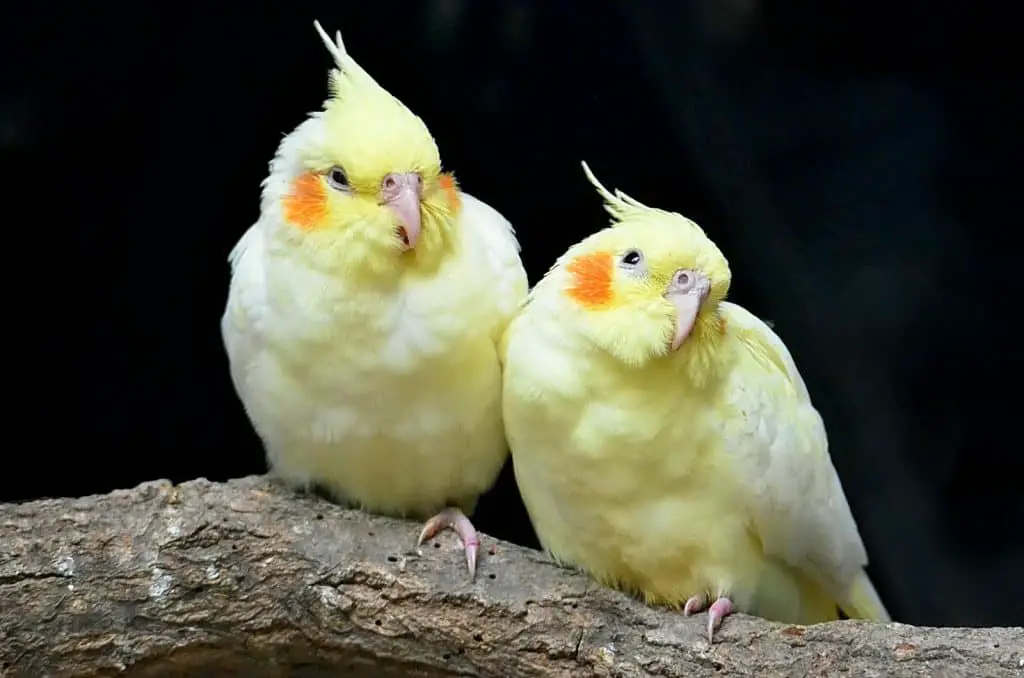
Cockatiels are particularly sensitive to various household fumes. Recognizing these potential dangers is essential to maintain their health and safety. This section will guide you through the sources of harmful fumes and signs of exposure to safeguard your feathered friend.
Common Sources of Harmful Fumes
Many everyday items and activities can release fumes that are harmful to cockatiels. Nonstick Cookware is a primary offender, as heating pans with Teflon coating can emit toxic chemicals that may lead to respiratory distress or even death in birds. Scented Candles and Air Fresheners also pose risks.
They release volatile organic compounds (VOCs) and other chemicals into the air, which, while pleasant smelling to humans, can be detrimental to your cockatiel’s respiratory system. Moreover, Cleaning Supplies under your sink contain a myriad of chemicals, including ammonia and bleach, that when used, can seriously harm your pet if the room is not adequately ventilated.
Additionally, devices like self-cleaning ovens and space heaters can produce smoke or noxious fumes like carbon monoxide that are dangerous if inhaled by your bird.
Signs of Fume Exposure in Cockatiels
If your cockatiel has been exposed to toxic fumes, it may exhibit a variety of distressing symptoms. Difficulty breathing is a common sign, manifested by rapid, open mouth breathing and a pronounced tail bobbing. Cockatiels might also display Eye Irritation, characterized by red, watery eyes or frequent blinking.
Another alarming symptom is behavioral changes. A cockatiel suffering from exposure might appear lethargic, disoriented, or less responsive to normal activities. If you observe these signs, especially after potential exposure to toxic fumes, it’s crucial to move your bird to a fresh air environment immediately and seek veterinary care for supportive therapy.
These symptoms underline the importance of keeping your cockatiel’s environment clean, ventilated, and free from fumes. Implementing regular checks and maintaining a bird-safe space are steps that protect your bird’s well-being significantly.
Types of Harmful Fumes
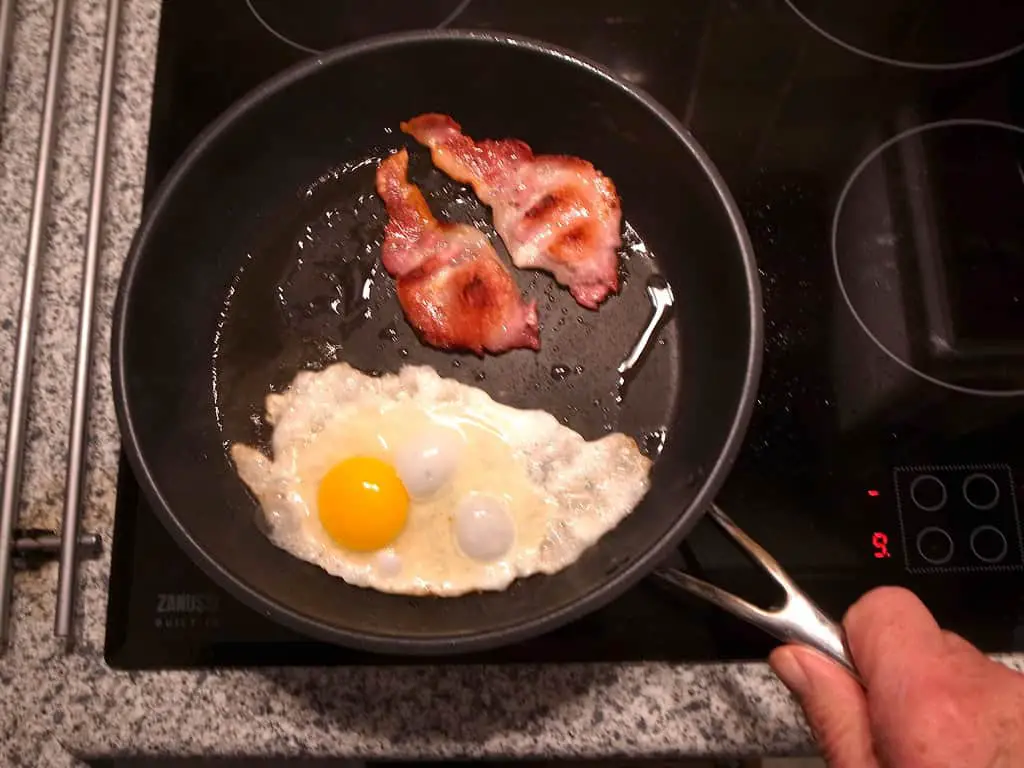
Your cockatiel’s health can be significantly compromised by exposure to various household fumes. Understanding the specific types of fumes and their sources helps protect these sensitive birds. Below, you’ll find crucial information on some common domestic fumes that are particularly hazardous to your feathered friend.
Teflon and Non-Stick Cookware
Nonstick cookware, often coated with Teflon, releases toxic fumes, including perfluorooctanoic acid, when overheated. These fumes lead to a condition in birds known as “Teflon toxicity” or “polymer fume fever” which can cause severe respiratory distress and, in many cases, sudden death.
The nonstick surface, when heated above 500 degrees Fahrenheit, starts to decomminate, emitting fumes that are almost undetectable to humans but highly toxic to your cockatiel’s efficient respiratory system. It’s critical to either use these products cautiously around your birds or replace them with bird-safe alternatives.
Signs of Fume Exposure in Cockatiels
If your cockatiel has been exposed to toxic fumes, it may exhibit a variety of distressing symptoms. Difficulty breathing is a common sign, manifested by rapid, open mouth breathing and a pronounced tail bobbing. Cockatiels might also display eye irritation, characterized by red, watery eyes or frequent blinking.
Another alarming symptom is behavioral changes. A cockatiel suffering from exposure might appear lethargic, disoriented, or less responsive to normal activities. If you observe these signs, especially after potential exposure to toxic fumes, it’s crucial to move your bird to a fresh air environment immediately and seek veterinary care for supportive therapy.
These symptoms underline the importance of keeping your cockatiel’s environment clean, ventilated, and free from fumes. Implementing regular checks and maintaining a bird-safe space are steps that protect your bird’s well-being significantly.
Types of Harmful Fumes
Your cockatiel’s health can be significantly compromised by exposure to various household fumes. Understanding the specific types of fumes and their sources helps protect these sensitive birds. Below, you’ll find crucial information on some common domestic fumes that are particularly hazardous to your feathered friend.
Teflon and Non-Stick Cookware
Nonstick cookware, often coated with Teflon, releases toxic fumes, including perfluorooctanoic acid, when overheated. These fumes lead to a condition in birds known as “Teflon toxicity” or “polymer fume fever” which can cause severe respiratory distress and, in many cases, sudden death.
The nonstick surface, when heated above 500 degrees Fahrenheit, starts to decomminate, emitting fumes that are almost undetectable to humans but highly toxic to your cockatiel’s efficient respiratory system. It’s critical to either use these products cautiously around your birds or replace them with bird-safe alternatives.
Cigarette Smoke and Other Aerosols

Cigarette smoke comprises a cocktail of over 4,000 chemical compounds including carbon monoxide, ammonia, and formaldehyde—many of which are toxic if inhaled even in minute amounts. Not only cigarette smoke but also aerosols from spray deodorants, hair sprays, and air fresheners contain particulate matter that can lodge in a bird’s respiratory tract, leading to chronic respiratory problems or even neurological damage. If you smoke or use aerosols, it is paramount to do so away from your cockatiel’s room to ensure their environment stays uncontaminated.
Household Chemicals
A wide range of common household chemicals, such as ammonia-based cleaners, bleach, and even scented detergents, can emit fumes that are harmful to your cockatiel. Exposure to these chemicals can irritate their respiratory system and eyes, potentially leading to more severe health issues with prolonged exposure.
Store these products away from areas frequented by your bird and opt for bird-safe or natural cleaning alternatives. Ensure that the space is well-ventilated if these substances must be used in your home, ideally with windows open to circulate fresh air and minimize fume accumulation.
Immediate Actions to Take if Your Cockatiel Is Affected
Given the potential dangers highlighted earlier regarding fumes from nonstick cookware, scented candles, and other sources in your home, immediate steps can protect your cockatiel’s health when they show signs of distress. Birds’ respiratory systems are particularly sensitive to airborne contaminants, making timely intervention crucial.
Symptoms to Watch For
Monitor your cockatiel closely if you suspect that hazardous fumes have affected them. Key indicators include:
- Difficulty Breathing: If your cockatiel is gasping, has open mouth breathing, or shows signs of labored breathing, these are immediate red flags.
- Behavioral Changes: Watch for any deviations from normal activities such as lethargy or hyperactivity.
- Physical Symptoms: Eye irritation and tail bobbing can signify discomfort and harmful exposure.
Recognizing these symptoms quickly will enable you to respond more effectively, minimizing the risk of severe complications like respiratory problems or even neurological damage.
First Aid for Fume Exposure
If you notice any of the above symptoms suggesting fume exposure, take the following steps:
- Ventilate the Area: Remove your cockatiel from the room where exposure occurred. Open windows to disperse the fumes unless the air outside is equally toxic (e.g., from wildfire smoke).
- Supply Fresh Air: Move your cockatiel to a well-ventilated room where the air is clean. Ensure that no residual fumes from the kitchen, smoking, or aerosols are present.
- Seek Veterinary Help: Contact an avian veterinarian immediately. Respiratory distress can deteriorate rapidly in birds.
Correct and timely actions not only mitigate the immediate threat but also protect your cockatiel from potential long-term health issues. Maintaining a bird-safe environment at all times helps avoid exposure to toxic chemicals from various household sources.
- 2-PACK: Change things up for your pet with our 2-Pack of Natural E Cuttlebones! Along with providing additional vitamins and minerals, our Natural E Cuttlebones allow for a subtle and stimulating change in your pets daily life.
- ENRICHED WITH VITAMINS & MINERALS: Our Natural E Cuttlebones are enriched with Omega 3 Fatty Acids, Honey, and Vitamin B1. All of these nutrients are necessary for maintaining healthy bones and plumage (feathers), as well as avian energy needs and egg production.
- DURABLE & LESS BRITTLE: These cuttlebones are made to be less brittle compared to the competition, and are free from artificial ingredients or colorings. Furthermore, to help prevent Cuttlefish population from becoming decimated, this product is made with 40% cuttlebone.
- CLIP INCLUDED: To make for simple and easy mounting, our Natural E Cuttlebones include a clip for hanging on a wire cage.
- INGREDIENTS: Calcium Carbonate, Cuttlefish Bone Powder, Flaxseed Oil (Source of Omega 3 Fatty Acids), Thiamine Hydrochloride (B1), and Natural Flavor.
Preventing Fume-Related Issues
To safeguard the health of your cockatiel, taking proactive steps to prevent fume-related issues is crucial. Ensuring that the air your bird breathes is free from harmful fumes significantly enhances its well-being and longevity.
Safe Household Practices
Minimize the risk of fume exposure in your home by adopting bird-friendly housekeeping routines. Always use exhaust fans or open windows to maintain adequate ventilation, especially during activities that generate fumes such as cooking or painting.
Opt for safer cooking methods by avoiding nonstick cookware that contains Teflon, as they can release toxic fumes when overheated, potentially leading to respiratory system damage in birds. Additionally, be mindful about keeping your bird’s room free of smoke and aerosol sprays, which are commonly found in air fresheners and some cleaning products.
Proper placement of your bird’s cage plays a vital role in minimizing fume exposure. Position the cage in a well-ventilated room yet away from kitchens and bathrooms where fumes are more prevalent. Regularly check household items like space heaters and self-cleaning ovens, which can emit harmful gases when in use, ensuring they are not operating near your cockatiel. Lastly, replace harsh chemical cleaners with natural alternatives like vinegar and baking soda, which are non-toxic and safe for use around pets.
Alternatives to Harmful Products
Integrating non-toxic alternatives into your household helps protect your cockatiel from dangerous fumes. Instead of air fresheners that can release volatile organic compounds (VOCs), consider using natural sources like baking soda to absorb odors, or plants like English ivy that purify air. When it comes to cookware, opt for stainless steel or cast iron options instead of nonstick varieties that contain harmful chemicals. These materials do not release toxic gases and provide a safer cooking environment for you and your bird.
Choosing cleaning products wisely also contributes to a safer air quality in your house. Look for eco-friendly products labeled as safe for animals, or make your own cleaning solutions using everyday ingredients such as lemon juice and essential oils—which should be used sparingly to prevent overwhelming your bird’s sensitive respiratory system. By taking these precautions, you not only protect your cockatiel from hazardous fumes but also foster a healthier living environment for everyone in your home.
Wrap Up: How do fumes affect your cockatiel?
Protecting your cockatiel from harmful fumes is crucial for their health and wellbeing. By implementing the steps discussed, you’ll not only safeguard your feathered friend but also enhance the air quality of your home. Remember, it’s all about creating a safe, toxin-free environment that benefits everyone in your household. Stay vigilant and proactive in your approach to ensure your cockatiel lives a happy, healthy life.
Other suggested articles:


